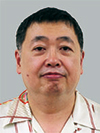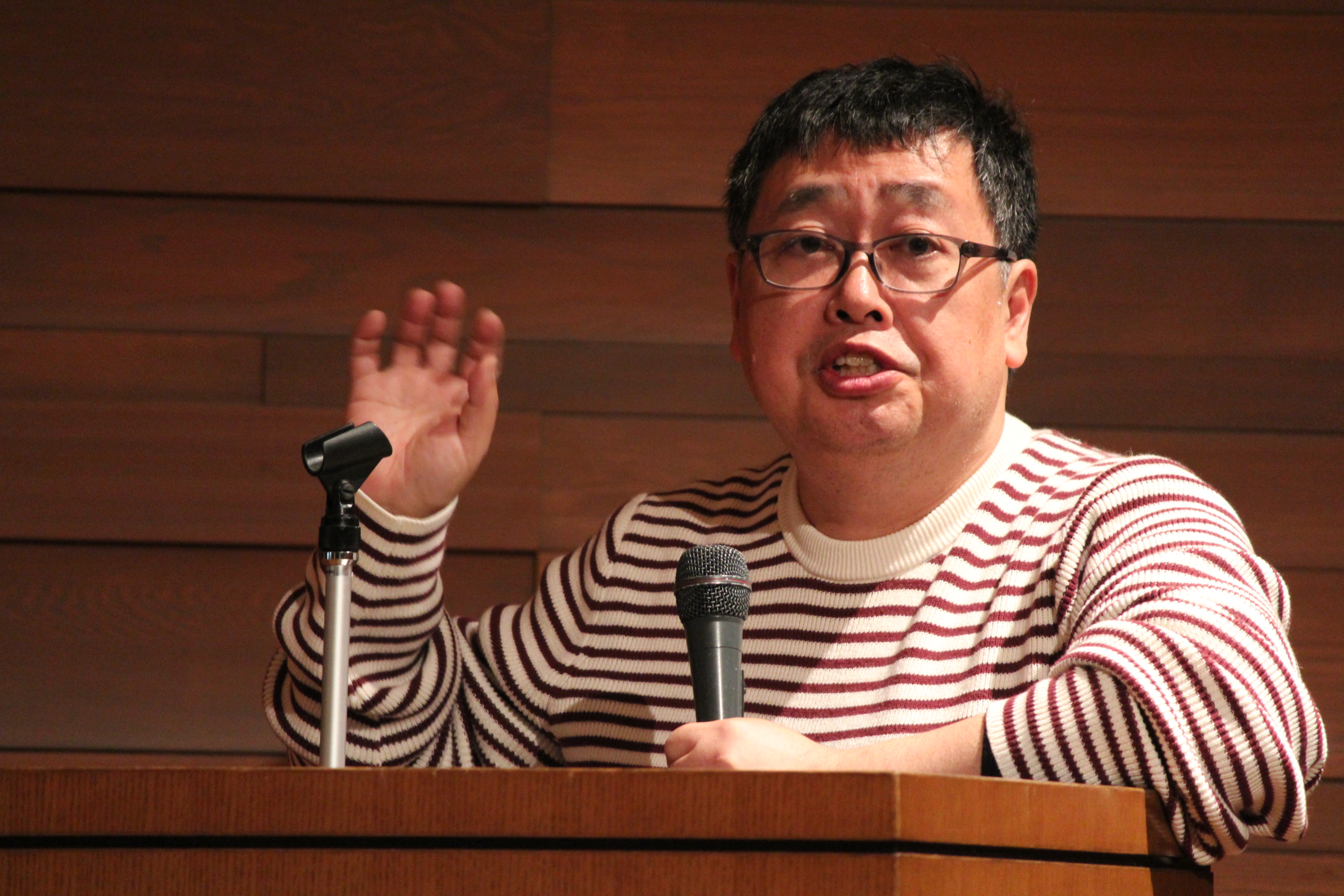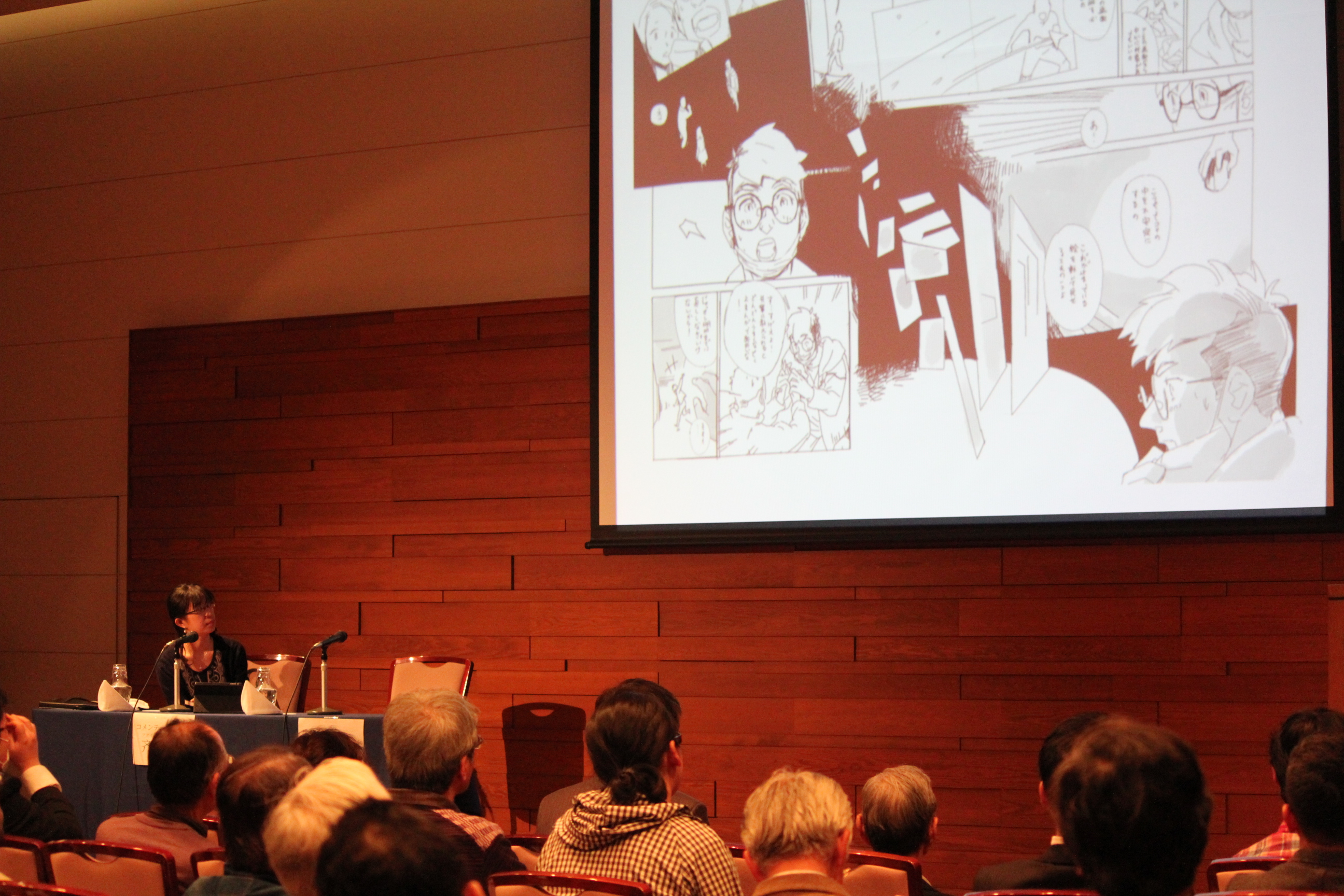This event now concluded. Report available here.
- *This event has finished.
- Lecturer: Otsuka Eiji (Professor, Nichibunken)
- Date: Tuesday, April 21, 2015, 6:30-8:00 pm
- Venue: Iwasaki Koyata Memorial Hall, International House of Japan
- Language: Japanese (without English interpretation)
- Co-organized by International Research Center for Japanese Studies (Nichibunken)
- Admission: Free
- Seating: 200 (reservations required)
In Japan it is commonly believed that Japanese manga and animation as forms of expression have reached general acceptance abroad. Eiji Otsuka asserts that the Japanese manga industry regards manga fans abroad solely with a market-based perspective, focusing mainly on the exporting of content. They are oblivious to the growing worldwide community of artists and audiences engaged with this artistic medium.
Japanese manga, developed locally and with its roots in the works of Walt Disney and Sergei Eisenstein, occupies a space shared with the French bande dessinée, American comic books, and the lianhuahua that took China by storm. Thus it is important to consider how the art of manga is perceived, received, and transformed by its interactions with similar media in other parts of the world, and what aspects of it should be maintained or discarded. Professor Otsuka, a worldwide lecturer in “The Art of Manga,” will discuss these themes in his lecture.
Otsuka Eiji
 He is a leading Japanese theorist of manga, anime, fan cultures and media mix practice. Prof. Otsuka is also the creator of popular manga, such as Taju-jinkaku Tantei Psycho (Multiple Personality Detective Psycho, 1997-) and has held numerous workshops abroad on the art of Japanese manga and its cinematic method. His recent publication include Mickey no shoshiki (Mickey Method, Kadokawa Sosho, 2013).
He is a leading Japanese theorist of manga, anime, fan cultures and media mix practice. Prof. Otsuka is also the creator of popular manga, such as Taju-jinkaku Tantei Psycho (Multiple Personality Detective Psycho, 1997-) and has held numerous workshops abroad on the art of Japanese manga and its cinematic method. His recent publication include Mickey no shoshiki (Mickey Method, Kadokawa Sosho, 2013).
*I-House has started a series of forums in collaboration with Nichibunken to deepen the understanding of contemporary Japan from various perspectives.
Report
“Many people in Japan are under the mistaken impression that a manga boom is sweeping through the world and that there is broad, international acceptance of this form of expression.” Otsuka Eiji, one of manga’s leading theorists and creators, began his April 21, 2015, lecture on this sobering note, showing his skepticism toward the government’s Cool Japan campaign. This has not stopped Otsuka from actively sharing his knowledge and skills with budding manga artists overseas, however. “They’re not just trying to imitate Japanese manga,” he explained. “They’re interested in creating something new by fusing elements from their own culture.” He thus sees room for growth and innovation abroad, even as the domestic market has become mired in a creative rut.
Otsuka spent seven years developing a curriculum to teach Japanese manga abroad and has launched manga workshops in eight countries, including France, China, and the United States. In his I-House lecture, he provided a candid analysis of the history and present status of Japanese manga, shared his perceptions of cultural difference in each of the countries where his manga courses have been taught, and introduced some novel approaches being developed around the world.
A Manga That Reads Like a Movie
Otsuka teaches the “cinematic method” of drawing manga, where consecutive frames are usually pieces of the “whole picture” that are stringed together to depict a single scene. This is a method that was developed by manga pioneer Tezuka Osamu and other residents of the Tokiwa-so apartment building in Tokyo, as well as by gekiga innovator Tatsumi Yoshihiro, based on the montage theory of Soviet film director Sergei Eisenstein. It is the predominant technique used by Japanese manga artists today and is read without a second thought by Japanese readers. But this is not the case for Western comics, where each frame is often a complete “painting” in itself, so many foreign students, reports Otsuka, wind up drawing a series of portraits, especially in the beginning of their manga course.
Japanese manga is also characterized by bold shifts in viewing angle and effective use of blank space. Dynamic changes in the height, angle, and proximity of the reader’s perspective create flow and movement and can also skillfully reveal a character’s hidden emotions. “Japanese manga can be likened to film in terms of methodology,” Otsuka said, “and to literature in terms of content.”
Cultural Habits, Technical Solutions
The fundamental difference between the approaches in Japan and abroad, he noted, was how two-page spreads are conceptualized. A single page is taken as the basic unit in France and the United States, partly because artists can sell individual pages as independent works of art, whereas Japanese artists earn royalties from the sale of whole books. Many works in China squeeze four separate spreads onto a single, two-page spread based on completely different notions of the intended visual impact of an open page.
A recent technical development that may overturn the conventional thinking on spreads is the growing popularity of online manga. While many artists in Japan continue to adhere to the traditional, paper-based model, those in South Korea have discarded the old approach and have unhesitatingly shifted to layouts premised on vertical scrolling. “The days when our biggest technical challenge was to simulate cinematic effects on a piece of paper may be over,” Otsuka noted. “We have to give more thought to achieving this impact in a digital medium.”
The Pitfalls of a Market-Based Perspective
He also cautioned against the tendency to regard overseas fans of Japanese manga simply as a market. A blatantly commercial attempt to “sell” content abroad will only invite a backlash, no matter how receptive the audience may be toward works from Japan. Some people in other Asian countries may even see an export drive as a cultural invasion, he warned, eliciting comparisons with prewar aggressions. “We need to pay closer attention to the impact cultural exports have on the receiving country. Manga and anime cross borders quite easily, but there are historical, political, and social issues to consider. Only through richer and broader forms of communication—and even the experience of breakdowns in communication—can we hope to reach a certain level of mutual understanding.”
Following the lecture, manga researcher Qi Mengfei, who studied at the Beijing Center for Japanese Studies and is currently researching in Japan, introduced her own works created using the techniques expounded by Ishinomori Shotaro in his seminal Manga-ka nyumon (Guide to Becoming a Manga Artist). She showed how she is experimenting with new approaches, such as a horizontal layout that eliminates the technical problems posed by the inner margins of a print publication.
